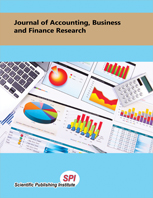Mortgage, Treasury, CD and Fed Funds Rates Spreads and Risk Premiums: How do They Impact Net Interest Margins?
DOI:
https://doi.org/10.20448/2002.83.125.132Keywords:
Bank management, Asset risk premiums, Asset/liability management, Mortgage rates, Treasury yields.Abstract
This paper utilized FRED (Federal Reserve Economic Data) data from the Federal Reserve Bank of St. Louis to examine historical risk premiums between 30-year mortgages and 30-year T-Bonds and spreads between yields on these two assets and funding costs represented by 6-month CD rates and fed funds rates. Risk premiums were greatest and spreads were smallest (some-times negative) during the high interest rate environment during the late 1970’s and early 1980’s. Risk premiums got smaller after the two financial crises of the 2000’s (the September 11, 2001 attack and the 2008 mortgage crisis) and the spreads became larger after both when the Federal Reserve cut rates tremendously. Despite these variations in income/cost spreads, net interest margins (to both total assets and earning assets) remained relatively stable. Regression analysis shows the best predictor of historical net interest margins was the 30-year treasury yield in lagged and non-lagged models. These results suggest the ability of banks to choose fund sources and fund uses allows them to reduce variation in net interest margins even while interest rates are volatile.


